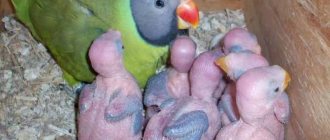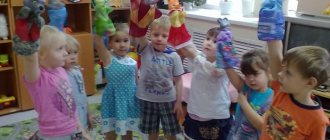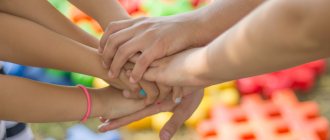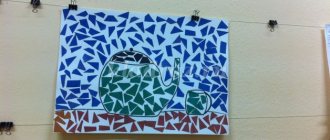Logorhythmics is often used to develop speech and correct it.
Speech therapy rhythm classes help the child improve articulation, learn proper speech breathing and cope with problems such as stuttering, incorrect pronunciation and too fast or slow speech rate.
What is logorhythmics for children?
How should classes be conducted?
How to choose logorhythmic exercises?
This article contains answers to these and other questions.
Goals and objectives
Since speech therapy rhythms promote the development of general motor skills and speech, by developing motor activity, logorhythms for children help overcome speech barriers. There are correctional, educational, educational tasks.
Corrective tasks include solving the main problem - speech pathologies in preschool children. Educational tasks introduce children to the concepts of rhythm, register, and tempo. Educational tasks form in preschoolers the ability to move correctly to musical accompaniment and to be critical of their movements and speech.
Logorhythmics. Logorhythmic lessons - Logorhythmic lesson “Visiting the Bunny” (junior group)
Publication “Logorhythmic lesson “Visiting the Bunny” (junior..." Organizational moment Game "Hello" Hello hands - clap, clap, clap. Hello legs - top, top, top. Hello cheeks - splash, splash, splash. Hello my nose - bi, bi, bi Hello children - hello! The song “This is how we can” The legs began to walk - tramp, tramp, tramp...
Logorhythmics program for children 3–4 years old Duration of the educational process - 1 year Compiled by: teacher-speech therapist Yulia Vasilievna Klokova Children with speech pathology experience a significant impairment of all components of the language system. Children use adjectives and adverbs little and make mistakes in...
Logorhythmics. Musical lesson for children 2–3 years old “Bunny visiting the children” Municipal preschool educational institution “Kindergarten of general developmental type No. 5” in Bronnitsy “Bunny visiting the children” Musical lesson for children 2-3 years old. Conducted by music director: Tikhonova O.V. 2015 Goal: To cultivate an interest in music, a desire to listen to music...
Holiday scenario with elements of logorhythmics for the graduation of children 2.5–3 years old from the 1st junior group into kindergarten Author: Pichuzhkina Maria Sergeevna, teacher-speech therapist GBOU NSH s. Krasnoarmeyskoye municipal district Krasnoarmeysky, Samara region, structural unit of the kindergarten "Ogonyok". Description of the material: script for a holiday for the graduation of children 2.5-3 years old from the 1st junior group into kindergarten...
Role and significance
To answer the question of what logorhythmics is, you need to evaluate the role of the method in the speech development of children. It performs a very important task for the teacher - it distracts them from the main problem with speech and allows them to solve it with the help of a logarithmic game. The child is open to communication during classes and can express himself creatively. Fun logorhythmics as a means of speech development for preschoolers has a positive effect on the health of children, their cardiovascular, respiratory, and speech motor systems.
What are the effects of logorhythmic exercises?
In logorhythmics classes, the formation of motor skills and psyche occurs at an unconscious level. Due to the development of the motor sphere, the child’s speech is formed. Any skills that were acquired during logorhythmic classes can be consolidated in speech material.
To understand what is included in the content of logorhythmics, you need to determine what rhythmic is in general and why it is needed.
The human body is constantly in dynamic development. This is especially true for children. The structure of the body and the functionality of individual organs are improved, the child learns to adapt to the external environment. One of the important areas of development is the formation of motor skills and abilities.
Motor skills are the degree to which a child has mastered the technique of action. At the same time, in order to master the necessary movements, you need to concentrate your attention as much as possible on certain parts of the movement being performed, as well as on ways to solve motor problems.
Movement skill is such a degree of mastery of movement techniques that allows you to automatically control them with high reliability.
A person makes any movement in accordance with the rhythm. However, the word “rhythm” can have a broad meaning. This includes the rhythm of the heart and breathing. But it could be the rhythm of a piece of music or poetry. Rhythm is a concept that affects many areas of life and the world around us. Rhythm has a main feature - it is a certain order of objects and phenomena.
What kids can't do without logorhythmics?
Speech is a rather complex process. It involves different mechanisms: breathing, the work of the oral cavity, and the nervous system. The failure of one component causes problems in the entire speech process.
Logorhythmics classes are most needed for children with complex speech disorders. For example, children with a history of aphasia. Aphasia is a violation of already formed speech. With this disease, the perception of speech itself is also impaired. The task of the teacher in this case is to teach the preschooler to recognize speech addressed to him and to respond to it.
Classes are important for children with speech underdevelopment (OND and FFND), in which phonetics and the semantic side of speech suffer. Children with this disease get tired quickly and have difficulty learning material. With the help of logorhythmics, teachers help children overcome psychological barriers and adapt socially.
Speech therapy rhythms have a positive effect on children with stuttering and dysarthria - exercises, including breathing ones, create the necessary psychological mood and motivation.
results
Parents should understand that practicing logorhythmics does not give an immediate effect. Improvements in the child's speech will be noticeable after about six months. But if the violations were serious, it may take a year to achieve results.
In children who engage in speech therapy rhythms, you can notice:
- clear pronunciation;
- good articulation;
- correct speech breathing;
- expressive facial expressions;
- excellent motor skills;
- good sense of tact and rhythm;
- smooth and accurate movements and gestures.
Logorhythmics is a good way to deal with speech disorders in children in a playful way.
Logorhythmic exercises not only improve sound pronunciation, but also teach a sense of rhythm, proper breathing, articulation, and develop attention, hearing and memory.
Children need to study several times a week for six months. In this case, logorhythmic exercises will give maximum effect.
If you liked the article, please share a link to it
Types of tasks in logorhythmics
Logorhythmics exercises include various movements, words, songs, and sounds. Combining this results in useful, interesting tasks. Classic types of speech therapy rhythm classes consist of walking, marching, breathing, and dancing exercises.
Walking is a mandatory exercise in every lesson. Rhythmic movements with the pronunciation of words help cope with speech development anomalies in preschoolers. The teacher needs to regularly complicate it: children must learn to march in a circle, in pairs, in threes, and learn a counter step. Walking teaches kids to navigate in space and develops correct posture. Performed to musical accompaniment.
Exercises to strengthen muscle tone help preschoolers cope with their movements and teach them to control muscle tone.
Logorhythmic exercises for the breathing apparatus also strengthen the cardiovascular system. Completing these tasks helps strengthen diaphragmatic breathing and trains the duration of inhalation and exhalation.
Voice development tasks involve pronouncing vowels and consonants while exhaling. Thus, children develop the strength and expressiveness of their voice.
Dance elements in the tasks allow you to develop motor skills and feel the beats. The movements are selected from classical and folk dance, where the baby’s arms and legs can be used.
A variety of speech tasks can be accompanied by music, then the baby must learn to pronounce lines in accordance with the musical beat. This trains memory well and develops expressiveness of speech.
Puzzles
Riddles are motivating when working with little ones, as they allow them to be as interested as possible and motivated to complete the task. It is better to choose riddles with a saying. So, based on the content and rhyme, the baby immediately understands what is being said.
Poems
Using poems, you can create a task with the addition of dance elements. During the performance, children pronounce what they show with their movements. After this, you can talk with the children about the content of the poem. This also includes logarithmic songs.
Short stories
By playing out small stories (fairy tales), children get ready to perform logorhythmic exercises.
Group of visual techniques
The teacher should prepare in advance for conducting classes, select pictures, videos with exercises, as well as toys, on behalf of which the procedure for completing tasks will be explained.
Practical techniques
Similar techniques are used to summarize the results of speech therapy classes. Such techniques include drawings, crafts, and projects. Projects can be completed at home, together with parents of preschoolers.
Gaming techniques
Almost all tasks in logorhythmics are based on the game. Where complex interaction is not provided, you can use games for the little ones that will help them get ready for work.
How to personalize tasks
In order for a preschooler to accurately remember material based on speech therapy rhythms, he must hear, see, and move during classes. By combining several techniques you can get attention from the most restless children.
The use of logorhythmics in correctional and developmental work with all categories of pupils
Zhanna Portnova
The use of logorhythmics in correctional and developmental work with all categories of pupils
Severe speech impairment (SSD)
in children with normal hearing and intact intelligence, unfortunately, they are becoming more common in recent years.
This makes communication difficult, negatively affects the child’s emotional sphere, and reduces cognitive activity. In addition, children with SLI experience disturbances in fine and gross motor skills, coordination of movements, decreased attention, and rapid fatigue. Therefore, the main thing in working with such children is an integrated approach: coordination of the actions of the speech therapist , teacher and other specialists. The implementation of this approach is effectively facilitated by integrated developmental game activities, planned in accordance with lexical topics. They can be carried out as a joint activity of a teacher , speech therapist , music director, or separately by each specialist. Classes include educational, speech and musical games, exercises for the development of communication skills, the emotional and motor spheres of the child, elements of psycho-gymnastics, and involve frequent changes in activities, which allows maintaining the required level of performance and attention even in children with increased excitability.
The main goals of such classes:
- enrichment of vocabulary, development of coherent speech or speech in general, active cognitive activity of children;
— education of emotional responsiveness to surrounding objects and phenomena;
- developing interest in musical and literary works.
A piece of music is the same story, but not in words, but by other means that provide the basis for imaginative thinking and contribute to the emergence of new associations. In preschool age, a child perceives music unconsciously , as well as speech and movement. Music, speech and movement become central to the development of a preschooler. Musical works, competently selected taking into account the age and individual characteristics of the pupils , enrich the emotional sphere, develop feelings of empathy, contribute to the development of the ability to differentiate different moods, and develop a sense of rhythm. Thus, listening to music, speech and physical activity mutually stimulate each other. Including outdoor games, connecting speech with movement, and relaxation exercises in the organized educational process gives children rest and allows them to maintain attention throughout the entire time of communication. This is how first general therapeutic, and then highly specialized speech therapy rhythms .
Back in the middle of the last century, biologists and doctors proved that regularly performing certain movements in a given rhythm can overcome a variety of diseases and not only improve well-being, but also raise “morale”
patients. A connection between movements, speech and music, which helps children learn to speak beautifully and smoothly, and even, in some cases, get rid of stuttering.
Speech is a complex process that requires coordinated work of breathing , articulation organs, nervous system, and sensory . When at least one of the components fails, as a rule, the entire mechanism collapses. The task of logorhythmics is to make sure that everything works smoothly and without failures .
Logorhythmics perfectly develops gross and fine motor skills, coordination of movements, speech breathing, and helps normalize muscle tone. classes train memory , attention, perception , especially auditory, have a very beneficial effect on the physical condition of pupils , help to form correct motor skills. They have a beneficial effect on the psycho-emotional state of children: it calms the restless and excitable ones, and on the contrary motivates the slow and thoughtful ones to activity. These classes develop a sense of rhythm, which contributes to the development of phonemic hearing and perception ; in the future, when working on dividing a word into syllables, isolating one sound from a number of others or as part of a word, children experience less difficulty when finding a stressed syllable.
Logorhythmic exercises are one of the forms of speech correction . Classes with elements of logorhythmics are recommended in all age groups of kindergarten, for all categories of pupils . These exercises can be part of speech therapy , music, physical education classes, as well as classes on speech development, drawing, and can be used for group classes, on a walk, with or without musical accompaniment.
Logorhythmics is primarily useful for children:
- with stuttering or a hereditary predisposition to a violation of the tempo-rhythmic aspect of speech;
- with bradylalia, tachylalia or intermittent speech;
— with insufficiently developed motor skills or coordination of movements;
- with ADHD;
— with disabilities and disabilities;
- with dysarthria, delayed speech development, alalia, impaired pronunciation of individual sounds;
- often sick and weakened children;
- those in the period of intensive speech formation (age 2.5 – 4 years)
.
Classes can be conducted both in group form, which children love, and individually (children with disabilities, children with increased anxiety)
.
A distinctive feature of rhythm, including speech therapy, is simplicity .
· All exercises are based on imitation, the adult shows, the child repeats. Speech material is memorized on its own from lesson to lesson. At the first stages, the text is read by an adult, children repeat it depending on their individual characteristics and characteristics of speech, memory and perception . Appropriate simple movements and musical accompaniment are added to the text. When children completely remember the text and the corresponding movements, then the task is completed without the help of an adult .
· Logorhythmics should be practiced 2 times a week, preferably in the afternoon (children who stutter need to be practiced 3-4 times a week)
.
Logorhythmics classes do not give immediate results. Work must be carried out within the system.
We can talk about results no earlier than in half a year. · The child should be interested and have fun. The performance of songs can be accompanied by visuals, the use of toys , musical instruments, individual costume details, if all this does not interfere with movement, or the presence of some fairy-tale hero.
· Exercises must be repeated many times from lesson to lesson until they are performed correctly and accurately. Musical accompaniment is selected depending on what stage of the lesson and which child is being worked with . Waltzes are suitable for the slow part of relaxation exercises, and marches for a more active part, for example during a dynamic pause. Or ready-made compositions collected in collections, if the children are learning a song.
· Classes are conducted taking into account the individual characteristics of a child or group of children. If something doesn’t work out, the material can be simplified, shortened, or divided into several parts, divided into several lessons. If your child senses your dissatisfaction or dissatisfaction, he may refuse to attend.
start practicing logorhythmics from birth , but until 2 years of age, classes will be passive. They will be reduced to reading poetry with clapping rhythm.
At the age of 2-4 years, children improve motor skills, learn to speak, communicate - this is exactly what needs to be done in logarithmics . If the child does not speak, encourage him to at least repeat the endings of words.
· Game "Orchestra"
aimed at developing auditory attention.
So, when I say “Rain”
- you should make a noise
“SHSHSHH”
, when I say
“Lightning”
- clap your hands (you can ring the bell, when you say
“Thunder”
- you stomp your feet (you can beat the tambourine, on the word
“Silence”
everything falls silent.
At the age of 4 to 6 years, a child’s speech ceases to be “childish”
Therefore, we must strive for purity and correctness of speech.
pronunciation of pure phrases to practice sounds logorhythmics classes .
· Game "Candy"
is aimed at developing coordination, general motor skills and automation of the sound
“Ш”
(taken from the collection
“Merry
Logorhythmics ” ).
Shi-shi-shi, how good the candy is.
Sho-sho-sho, wash your hands well.
Shu, shu, shu, I’ll invite you to the table.
Sha, sha, sha, let's eat slowly.
use songs and games to reinforce any lexical topic , for example: “Winter”
,
“Leaflets”
,
“Snow, snowball”
,
“We sowed peas”
, etc. (from the appendix to the collection N. T. Bartosh, S. P. Savinskaya “Integrated developmental classes in a
speech therapy group ”).
CONCLUSION:
In my practical work, I have been actively using logorhythmic games and exercises for 4-5 years in individual, group, circle work , at various stages of classes: when conducting dynamic pauses, breathing, finger exercises, as reinforcement of material on lexical topics, in tasks on development of phonemic processes as relaxation exercises. These tasks are an effective form of working with various categories of children and give good results.
What do such activities give to children?
Logorhythmics allows you to overcome speech pathologies with the help of aesthetic education, correction of motor skills, while combining music and words. Logorhythmics forms and develops:
- auditory attention;
- musical, timbre, dynamic hearing;
- movement in space;
- fine, gross motor skills, facial expressions;
- kinesthetic sensations;
- the skill of correctly using sounds in different forms;
- coordination of the type of music with movements, understanding of rhythm.
The goal and objectives of logorhythmics combine work on the correction of speech disorders, motor skills and psychological methods of development. The method is aimed at results at an age when it is impossible to carry out complex correctional classes. Positive influence allows preschoolers to better master speech, motor skills, understand the task, and express themselves creatively.
Educational direction of logorhythmic exercises
- Educational objectives include: introducing the child to a variety of movements, developing movement skills, the concept of the organization of the body in space, and the terms existing in music.
- Educational tasks include: developing rhythm when listening to musical compositions, forming rhythm during the child’s movements, developing his skills in rhythmic movement to music, developing the ability to critically perceive his movements and evaluate his speech adequately.
Logorhythmics in pedagogical understanding
From a pedagogical point of view, rhythm is a set of physical exercises that are based on movements with musical accompaniment. Rhythm classes develop a sense of rhythm - this is a person’s ability to grasp how strong and weak beats of a musical meter alternate.
The child learns to move his legs, head or arms in accordance with the rhythm. If a child does not learn to feel the rhythm of music physically, he will not be able to perceive this rhythm to the fullest. After all, rhythm has an emotional and motor nature.
Rhythm education is based on the formation of a rhythmic musical sense - a person’s ability to actively perceive and reflect the rhythm of a musical work.
Methods for studying the effects of logorhythmics on the body
The method of developing rhythmic abilities was first described in 1912. It was studied by Emile Jacques-Dalcroze. This musician believed that rhythm could be used as an independent entity. In this case, the rhythm can be musical, motor or poetic.
Logorhythmics was first used as a technique to combat stuttering in 1932. These exercises were developed by V.A. Gilyarovsky, for which he received high expert assessment.
V.A. Griner wrote a lengthy article on logorhythmics in 1936. He set the task of developing special logorhythmic classes to combat stuttering and improve speech. The material for such classes was used by N.S. Samoilenko in her article written in 1941.
She classified exercises, divided into different categories of difficulty, so as to take into account children's motor impairments. She also laid down the basic principles by which the lesson should be conducted.
V.A. Griner developed practical material that would allow serious work with preschoolers who stutter. She read that the main difference between speech therapy rhythmics is that, unlike rhythmic education, special attention is paid to the word.
In the 40s, logorhythmics in our country began to be perceived as an important part of working with patients with aphasia. Speech therapy rhythms made it possible to overcome disorders of the musical edge of speech.
In the mid-20th century, works began to appear devoted to logorhythmics as a tool for combating stuttering in preschoolers. The work of V. A. Grinev, republished in 1958, reveals this topic most fully.
Two years later, another researcher V.I. Rozhdestvenskaya is developing exercises for combining movements and words. According to the author, thanks to the rhythm during movement, it is possible to normalize the child’s speech. E.F. Shershneva allows the use of speech therapy rhythms to correct stuttering in older preschoolers.







